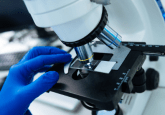Biomarker test could diagnose sepsis in minutes
Researchers from the University of Strathclyde (Glasgow, UK) have developed a novel biomarker test for rapid, earlier diagnosis of sepsis. This test could be used in Doctors’ surgeries and in A&E wards to quickly rule out sepsis, potentially saving thousands of lives.
It is estimated that 52,000 people in the UK die every year from sepsis, a serious complication of an infection that can be difficult to diagnose. Current, diagnosis of sepsis is usually based on body temperature, heart rate, breathing rate, and often a blood test, which can take up to 72 hours to process results.
Using a microelectrode, the new test can analyze a patient’s blood and generate results in under 3 minutes. This gives a sensitive real-time measurement as it detects a protein biomarker of sepsis, interleukin-6 (IL-6), in the blood. IL-6 is a molecule secreted by the immune system and its blood levels increase in many of those who have the condition.
The small size of the device – microelectrodes on a needle shaped substrates – makes it ideal for initial testing and continuous monitoring for sepsis, which is notoriously difficult to diagnose. In addition, the shape of the device means it could be implanted and used to monitor patients in intensive care.
“We’ve developed a needle shaped sensor with different electrodes and have shown we can detect one sepsis biomarker in almost real time, at the clinically relevant levels,” commented Damion Corrigan, the University of Strathclyde. “When levels go up, as they do in sepsis, we can detect that too. Sepsis is quite complex and difficult to diagnose but IL-6 is one of the best markers.”
Corrigan concluded: “Our research so far shows you can measure a single sepsis marker, but there are actually eight sensors on the needle, each about the same diameter as a human hair and the idea is that in the future we can get multiple markers on the one microchip for a more comprehensive test.”
Sources: Russell C, Ward AC, Vezza V et al. Development of a needle shaped microelectrode for electrochemical detection of the sepsis biomarker interleukin-6 (IL-6) in real time. Biosens. Bioelectron. 126, 806–814 (2019); www.strath.ac.uk/whystrathclyde/news/rapidtestforsepsisdevelopedbystrathclyderesearcherscouldsavethousandsoflives/






